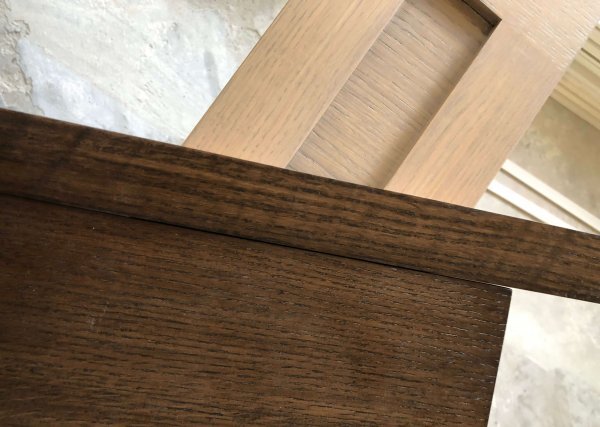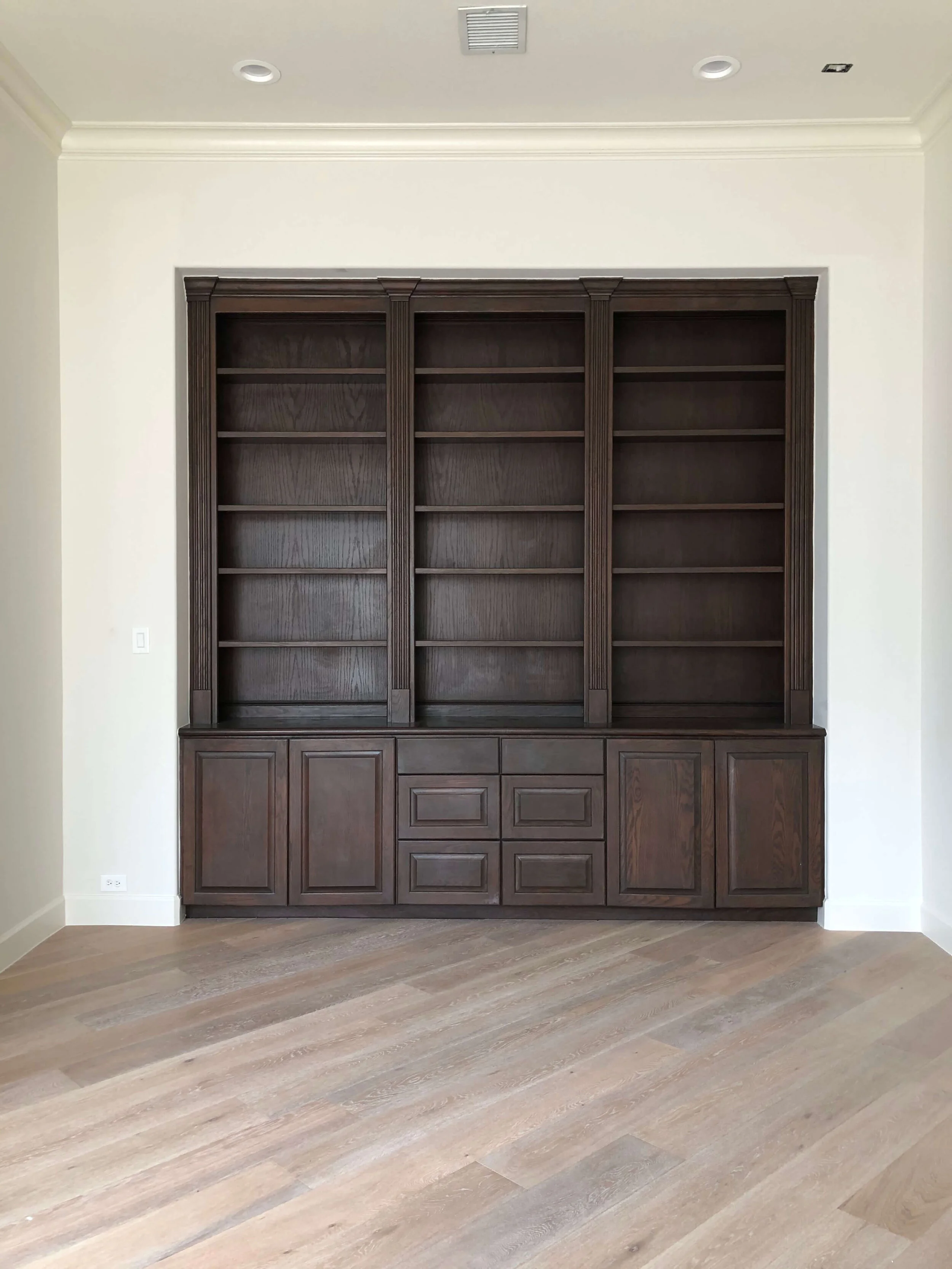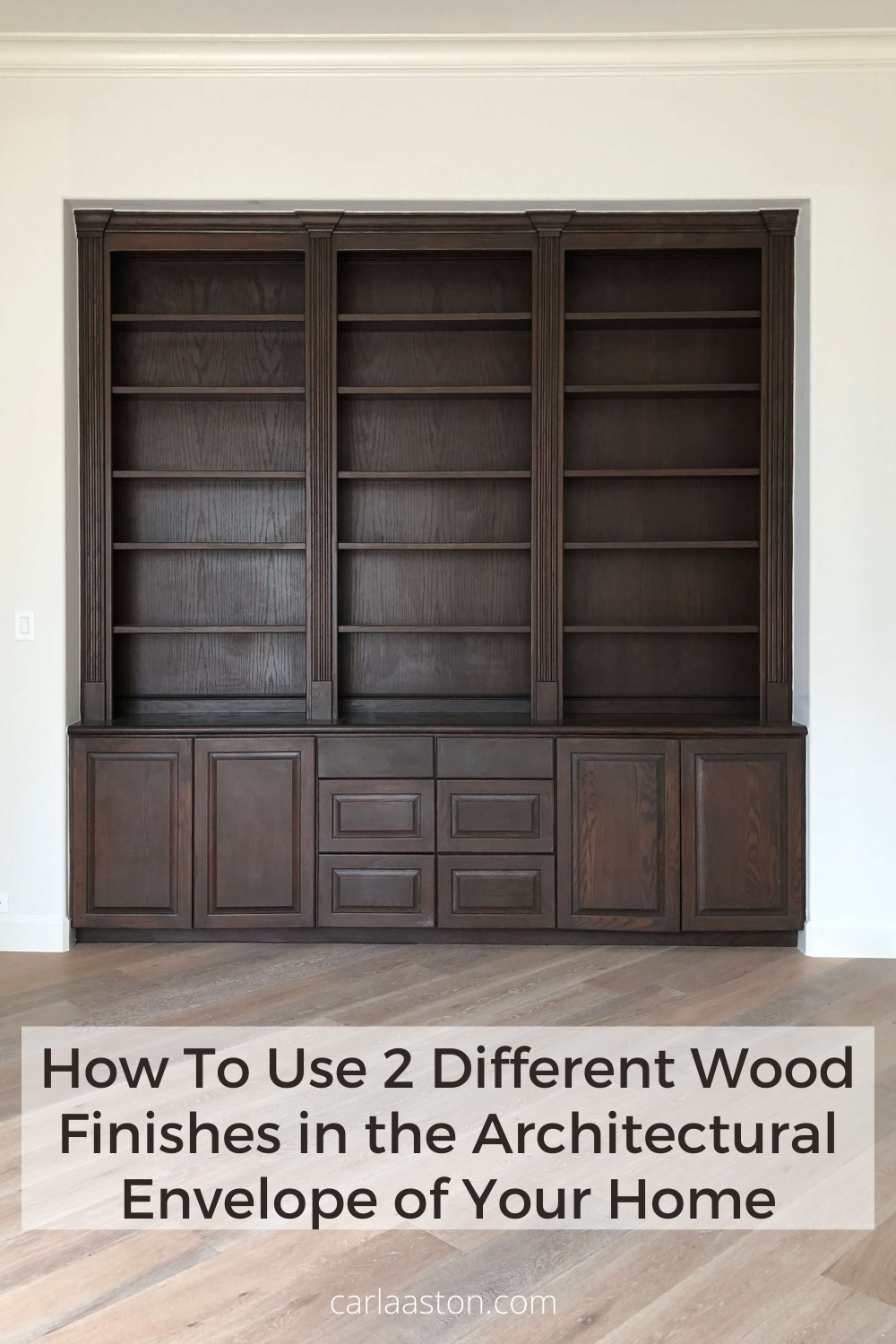I love to see 2 different wood finishes (or maybe more) layered in, thoughtfully, carefully in a home’s interior architectural envelope.
However, I don’t like seeing a muddy mess or a near miss on these expensive investments in a home, on materials like flooring, cabinetry, paneling, trimwork, etc.
I’m not talking about furniture, to me furniture can definitely be more of a mix. I’m talking about architectural finishes.
My General Rule For Using 2 Or More Wood Finishes In Architectural Envelope
If you are doing wood flooring and then wood cabinetry or paneling or any other wood tone in the architectural envelope in your home, then I suggest you either match the woods in color and value or contrast it heavily.
In this kitchen, below, we did an ebonized stain on the island, hood and doors, contrasting heavily with the lighter, oak floor.
The black, ebonized wood contrasts nicely with the wood flooring. Carla Aston, Designer / Tori Aston, Photographer
In this next kitchen remodel, we did a two tone look and stained the island and upper cabinet doors in a much darker stain for contrast. There was a lot of cabinetry in this kitchen and the contrast adds layers and richness to this look.
It would have been a muddy mess if we’d just gone with just a slightly different color wood. It would not have looked intentional or made a striking statement.
Two contrasting wood tones were used in this kitchen remodel. Carla Aston, Designer / Colleen Scott, Photographer
Here’s an example, below, of a built-in where we did a dark stain on these existing oak cabinets in a remodel. It paired well with the light oak flooring. This makes a really nice combination and a great way to mix wood finishes in the architectural envelope of your home. Going dark was also a good way to hide the wild grain of these plain sawn oak cabinet doors.
This built-in cabinetry was stained dark to contrast with the light wood flooring.
In this home, we refinished the kitchen cabinetry in an ebonized stain and then painted the island because there was only a slight difference between the floor color and the existing cabinetry.
It looked just “off”, like it was meant to match but didn’t. The floors were actually slightly more red than the cabinets. You can’t really see it in the photo below, but it was evident in person and it bugged the homeowner.
BEFORE REMODEL - The wood floor in this house was more red in color than the wood cabinetry and it just looked like a near miss.
You can see the red in the floor better in the “before” pic, below, of the breakfast area. Since the wood floor ran throughout the house, they weren’t going to replace or refinish it. The cabinets, however, could get a refresh. The homeowners were up for painting the island, but didn’t really want all painted cabinets.
BEFORE REMODEL - The existing wood floors were a little red in color and looked “off” from the brown stained cabinets of the same value.
AFTER REMODEL - Espresso perimeter cabinets and a painted island contrast enough with the wood floor to make this design feel intentional. Carla Aston, Designer / Tori Aston, Photographer
You can see the cabinets stained the espresso finish here. The client kept their existing pub table and chairs.
AFTER REMODEL - Espresso stained wood cabinets contrasts just enough to work well with the brown wood floor. Carla Aston, Designer / Tori Aston, Photographer
This home below, that I toured in LA at the Dwell by Design home tours a few years ago, show what I mean when I say it is good to either go for a significant contrast or match. It was designed by Assembledge+.
This home’s ceiling and kitchen cabinetry match in color and value, although the cabinets are a rift cut oak and the ceiling some other type of wood. Do you see how when the color tone matches, it creates continuity and balance here?
Contemporary home where the wood tones in the kitchen relate to the wood used on the ceiling too. Architect, Assembledge+
Need more info about how to put together all the architectural finishes in your home? I have a few more posts that might help.
Pin this to Pinterest to save for later reference!















Have you heard that cabinet hardware is the jewelry of the room? Well, it certainly can be. It can also be difficult to decide what your room should wear! Have a peek at some of the things I consider when selecting cabinet pulls and knobs on a project. These considerations might be good to keep on hand when you need to select hardware for your next project.